Lotus: Purity and Decay
I've spent the last two days, from well before sunrise to well after bedtime, editing and sorting photos from the Guyana trip. My neck is in a permanent vulturine hook from staring at the screen; my fingers stiff from doodling around with the mouse. I have gobs upon loads of photos and I want to share them all. So these posts will be heavy on images and somewhat light on prose. There is just too much to show you!
Georgetown has a fine botanic garden that is a Mecca for birds and birdwatchers. It is almost ridiculously full of and dripping with birds, most of them chowing down on the many sorts of fruit borne by the garden's trees. Better than that, there's all kinds of water, with a lazy stream flowing through, widening out into marshes and ponds, so there are kingfishers and waders in addition to orioles, parrots, pigeons and raptors. Tropical diversity hits you in the face in Guyana.
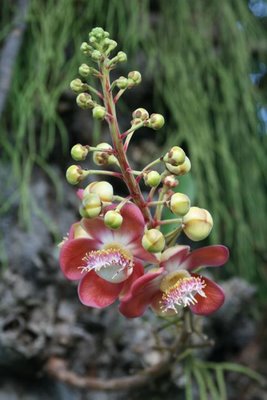
First, some plants. These are the flowers of a cannonball tree, Couroupita guianensis. From what I can find out, it's native to Guyana, though it's revered in India and grown in tropical zones throughout the world. By all accounts, the large cannonball sized fruits are nasty and inedible, though they may kill you by dropping without warning on your head.
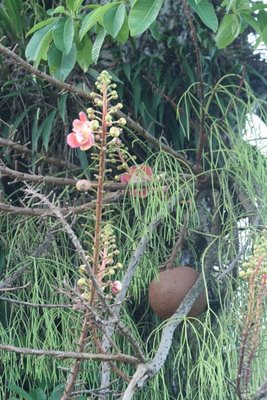 The flower stems grow directly from the lower trunk of the tree, as do the fruits, so the tree looks like it's wearing a skirt of gorgeous flowers and later brown cannonballs. It waves its main canopy of leaves high above all that mess. If I had to guess, I'd think that the fruits were meant to be eaten and dispersed by dinosaurs, being offered in the fashion known as sauropody (fruiting directly from the trunk). When you see a great big fruit offered right off the trunk, you just have to visualize an Iguanodon walking up to it and biting it off the stem, don't you? Bizarrely beautiful.
The flower stems grow directly from the lower trunk of the tree, as do the fruits, so the tree looks like it's wearing a skirt of gorgeous flowers and later brown cannonballs. It waves its main canopy of leaves high above all that mess. If I had to guess, I'd think that the fruits were meant to be eaten and dispersed by dinosaurs, being offered in the fashion known as sauropody (fruiting directly from the trunk). When you see a great big fruit offered right off the trunk, you just have to visualize an Iguanodon walking up to it and biting it off the stem, don't you? Bizarrely beautiful.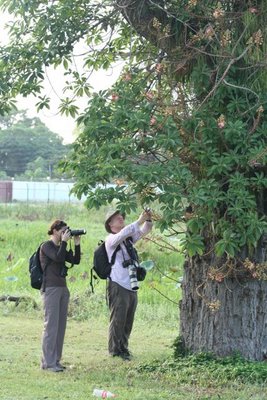
This gorgeous tree looks like a ceiba to me, one of the grandest of rainforest trees and always an emergent when it is allowed to get old enough.
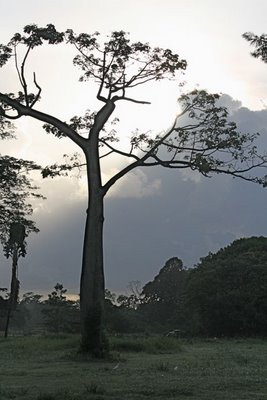 All along the garden, lotuses grow in shallow ditches. What an amazing plant, one I always wish I had room to grow.
All along the garden, lotuses grow in shallow ditches. What an amazing plant, one I always wish I had room to grow.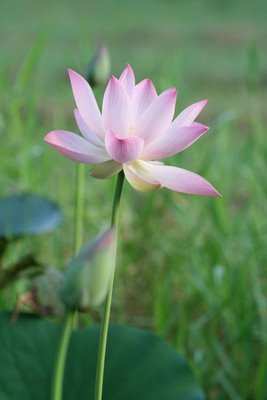 Lotus blossoms have a purity that astounds. And yet they always seem to grow amidst a bit of corruption, whether it be their own rotting leaves or the squelchy muck beneath.
Lotus blossoms have a purity that astounds. And yet they always seem to grow amidst a bit of corruption, whether it be their own rotting leaves or the squelchy muck beneath. 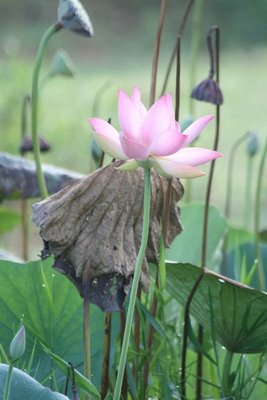 It's the contrast that's so alluring.
It's the contrast that's so alluring.The bud, a perfect tulip.
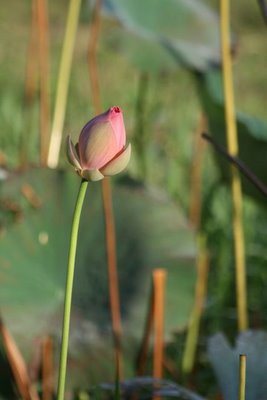
The seedhead is a rattlebox, a Chinese checkerboard of wood, perforated by round holes, inside each of which a large round seed dwells.
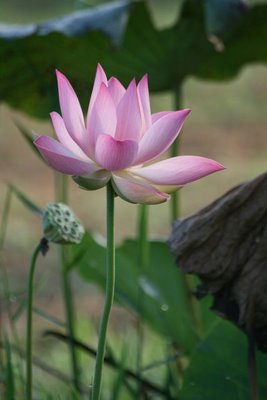 Here, my trip roommate and friend Erica peeks into a flower.
Here, my trip roommate and friend Erica peeks into a flower.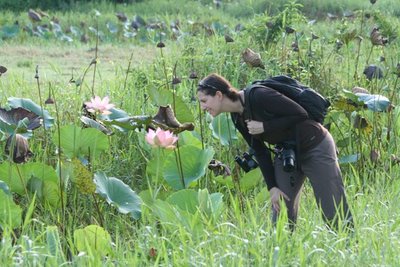
I always think of my friend Shila when I look into lotus blossoms, with that wonderful surprise of a proto-shower head inside. Thought of her when I took the last photo, too. It's the kind of thing her photographer's eye would pick up on immediately.
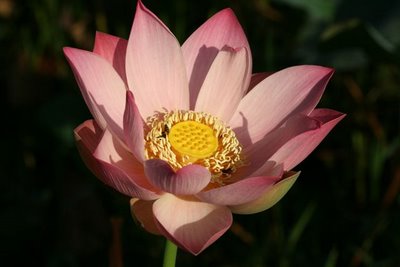
Lotus: Purity and beauty; death and decay, oversized--the essence of the tropics.
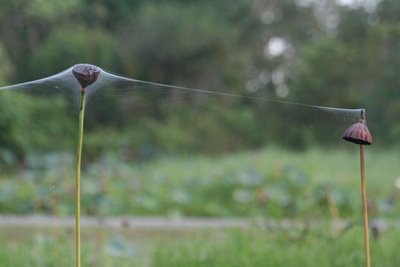
I know, we're in Guyana, but I've been briefly home to ingest some turkey and am now back to fluttering around in airports as usual. For those in the Birmingham, Alabama area, I'll entertain at Birmingham Audubon Society's annual Christmas Banquet at 6:30 pm Tuesday, December 2 at Vestavia Country Club. The meeting is open to the public, and you can find more information here. You'd make my day if you came up and blurted, "BLOG!"
Labels: cannonball tree, Georgetown Botanic Garden, lotus, sauropody






<< Home